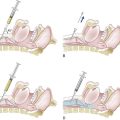Nicotinamide adenine dinucleotide (NAD) may not be a household term, but it is a pivotal molecule in the body, playing an essential role in various biological processes. This compound is found in all living cells, contributing to essential functions such as metabolism, DNA repair, and gene expression. Understanding how NAD operates can provide insights into health and longevity, lending clues to how we might enhance our wellbeing. Below, we delve into the complexities of NAD and its critical part in maintaining cellular health.
Boosting NAD Levels Naturally: Diet and Lifestyle Factors
Maintaining optimal NAD levels can be achieved naturally through diet, exercise, and lifestyle choices. Foods rich in niacin, such as fish, meat, and dairy, support NAD synthesis. Regular exercise is also beneficial, as it boosts enzymes that help increase NAD levels, enhancing cellular energy and protecting against age-related decline.
Managing stress, getting enough sleep, and practices like fasting or caloric restriction can further support NAD levels. These habits activate pathways that help recycle NAD, balancing the natural decline with age. For more information on NAD, visit nad.com.
Understanding NAD and Its Vital Role in Cellular Health
NAD, a key cellular component, exists in two forms: NAD+ and NADH. Its electron transfer capabilities make it crucial in cellular energy production, especially in mitochondria. NAD+ also plays a role in repairing damaged DNA, a process essential for cellular health and longevity. NAD+ serves as a substrate for enzymes like sirtuins and poly (ADP-ribose) polymerases (PARPs), which are essential for DNA repair.
NAD also influences cell signaling, with sirtuins regulating biological pathways related to stress resistance and aging. NAD levels decline with age, prompting research into its impact on aging and related diseases. NAD serves as a bridge between the biochemistry of life and the pursuit of improved health outcomes, making it a vital component in cellular health.
The Science Behind NAD: Metabolic Functions and Processes
NAD is a crucial component of oxidative metabolism, converting nutrients into energy through glycolysis and the Krebs cycle. Its versatility as a coenzyme allows it to interact with various enzymes, facilitating numerous biochemical reactions, including catalyzing oxidation-reduction reactions. NAD’s role in sustaining life is significant, as it generates energy and modulates metabolic pathways that influence cell survival and function.
NAD+ levels affect enzymes involved in fat and sugar metabolism, influencing cell response to energy demands and stressors. The regulation of metabolism by NAD is fine-tuned, reflecting the body’s need to adapt quickly to changing conditions. Maintaining optimal NAD levels can lead to high regard to metabolic health and disease prevention.
NAD in Energy Production: The Electron Transport Chain Explained
The electron transport chain is the final step in cellular respiration, where most ATP is produced. It transfers NADH’s electrons to molecular oxygen, driving the synthesis of ATP. NADH is a crucial component in energy production, as it donates electrons to the first complex, initiating oxidative phosphorylation, the primary energy production method in aerobic organisms.
The ratio of NAD+ to NADH in cells also serves as a metabolic indicator, influencing cellular processes and the overall redox state. Understanding the electron transport chain can provide insight into diseases where this process becomes compromised, such as mitochondrial diseases, ischemia-reperfusion injury, and certain neurodegenerative diseases. This highlights the broader significance of NAD in health and disease.
Anti-Aging and NAD: Investigating the Link
Contemporary science is exploring the role of NAD+ in aging, as it is a hallmark of aging. Studies show that increasing NAD+ can improve mitochondrial function, which is often compromised in aging cells. Research linking NAD with longevity is increasingly persuasive, with some animal studies suggesting that boosting NAD levels can extend lifespan and improve healthspan.
Sirtuins, which require NAD+ to function, play pivotal roles in these anti-aging effects. By bolstering NAD levels, scientists hypothesize it may enhance the body’s resilience to aging and reduce the incidence of age-related diseases like Alzheimer’s, diabetes, and heart disease.
Overall, the evidence underscores the importance of NAD in maintaining cellular health and metabolic balance. By appreciating the critical roles NAD plays in the body, from energy production to potentially warding off the effects of aging, we open the door to a variety of dietary and lifestyle interventions that can support our overall well-being. The quest to optimize NAD levels is not just about longevity but also about enhancing the quality of life at every stage.






